- Yokohama-shi Top Page
- Living and Procedures
- Housing and Living
- Waste and recycling
- Recycling of kitchen garbage
- kitchen garbage Blend Project
Here's the text.
kitchen garbage Blend Project
Last Updated December 28, 2024

The kitchen garbage Blend Project is a method of mixing soil and kitchen garbage and decomposing it by microorganisms.
This is a business to promote the recycling and reduction of kitchen garbage through methods of decomposing organic microorganisms and cardboard composting.
Let's start our efforts to recycle and reduce kitchen garbage!
[Notice] The pamphlet for the kitchen garbage Bren Earth Project has been completed!
It is distributed at each ward office Regional Promotion Division Resources Reuse Promotion and Resources and Waste Recycling Bureau offices.
You can also download and use it from the link below.
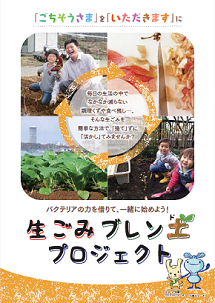
[Cover] (PDF:2,606KB)
[Introduction] (PDF:6,233KB)
[Basic Soil Mixing Method] (PDF:12,979KB)
[Cardboard compost] (PDF:14,539KB)
[Points and Trouble Corner] (PDF:13,075KB)
[Soil composition and crop production] (PDF:5,253KB)
[Classroom / Case Introduction] (PDF:9,595KB)
[Back cover/Contacts] (PDF:2,588KB)
● Easy: Anyone can practice easily just by mixing kitchen garbage and soil!
● ECO: It is an environmentally friendly initiative that does not use electricity.
● Healing: By touching the soil, both children and adults can relieve stress!
Use the "Check Sheet" to observe how kitchen garbage disappears!
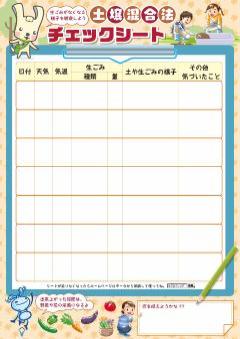 [Check sheet (surface)] (PDF:756KB)
[Check sheet (surface)] (PDF:756KB)
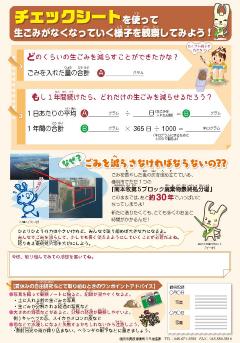 [Check sheet (back side)] (PDF:742KB)
[Check sheet (back side)] (PDF:742KB)
Use for classes at school or free study during summer vacation.
Soil mixing method
Just mix the soil with kitchen garbage! This method uses natural power to compost kitchen garbage without using electricity.
You can easily start with a planter. It can also be done in the garden or in the field.
→【 Click here to assemble the planter! (PDF:320KB)】
POINT
・Drain the kitchen garbage and make it as small as possible (1 to 2 cm) to advance the decomposition.
・The soil to be covered from above is dry and OK! Let's cover kitchen garbage with plenty.
→【 If you want to know more, click here! (PDF:324KB)】
→【Click here for the flyer of the soil mixing method! (PDF:2,582KB)】
→【Click here for the video of the soil mixing method! (External site) (YouTube)
Cardboard compost
It is a mixture of base materials (such as peat moss) and fermentation accelerators (such as rice bran) in a cardboard box to reproduce the circulation in nature by microorganisms.

POINT
・Use it on a snooch or the like so that air can flow from the bottom of the cardboard.
→【 Here's how to make and use of cardboard compost! (PDF:331KB)】
Earthworm compost
This method is to turn kitchen garbage into soil and organic fertilizer by raising worms and feeding kitchen garbage as food.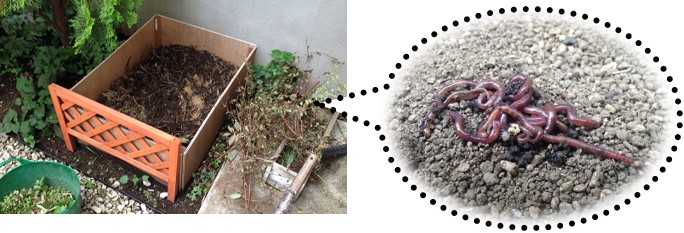
POINT
・Because worms are animals, they run away when they run out of food. Let's feed and breed moderately!
Decomposition by organic microorganisms
A method of converting kitchen garbage into organic fertilizer using Bokashi, which is fermented by bacteria and other microorganisms.
(Bokashi: rice bran, rice husk, etc.)
About compost subsidy business
In Yokohama City, following the start of the composting business in kitchen garbage.
The subsidy program for kitchen garbage compost and electric kitchen garbage processing machines was completed as of March 2016.
Thank you very much for your application.
We support the activities of groups and organizations that promote the recycling of kitchen garbage!
For groups and organizations that make effective use of composted soil by the soil mixing method (such as growing flowers in local flower beds)
We will provide the necessary items for the activities.
■Application period for FY2024
<Application acceptance for FY2024 has been closed>
From May 1, 2024 to December 27, 2024
■How to apply
<Application acceptance for FY2024 has been closed>
Submit the application form to the Resources and Waste Recycling Bureau office in the ward, which implements “Efforts to Effectively Utilize Compost produced by Soil Mixing Law”.
Please submit it (mail, fax, e-mail, etc.)
Click here for details (leaflet) (PDF: 4,406KB)
| 2024 | 2023 | 2022 | |
|---|---|---|---|
| Number of applications | 19 cases | 9 cases | 28 cases |
Flowers and vegetables grown using the distributed items
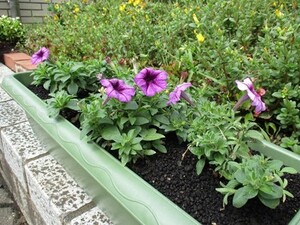
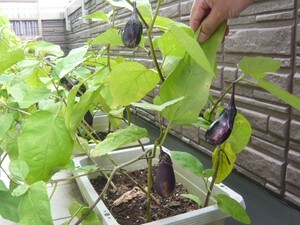
You may need a separate PDF reader to open a PDF file.
If you do not have it, you can download it free of charge from Adobe.
![]() To download Adobe Acrobat Reader DC
To download Adobe Acrobat Reader DC
Inquiries to this page
Resources and Waste Recycling Bureau Policy Coordination Department 3R Promotion Section
Telephone: 045-671-3593
Telephone: 045-671-3593
Fax: 045-550-3510
Email address: sj-3rsuishin@city.yokohama.lg.jp
Page ID: 160-934-672







